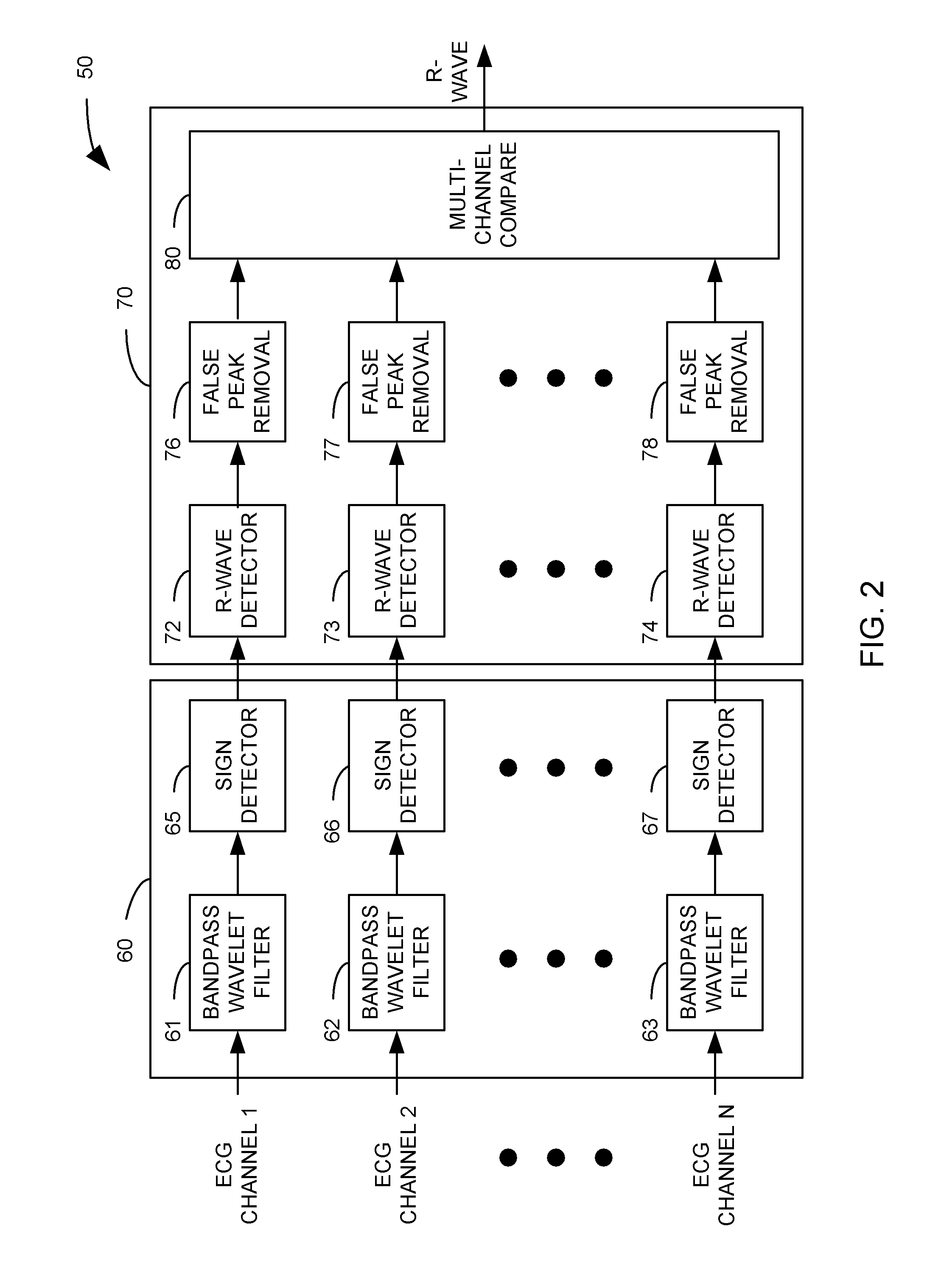Prediction and prevention of postoperative atrial fibrillation in cardiac surgery patients
a cardiac surgery and atrial fibrillation technology, applied in the field of system and method for predicting clinical outcomes, can solve the problems of increased hospital costs, low cardiac output state, increased morbidity and mortality,
- Summary
- Abstract
- Description
- Claims
- Application Information
AI Technical Summary
Benefits of technology
Problems solved by technology
Method used
Image
Examples
Embodiment Construction
[0014]In accordance with an aspect of the present invention, computer based algorithms have been developed to collect and segment electrocardiogram (ECG) data and to identify and characterize premature atrial contraction (PAC) activity, heart rate variability (HRV), and P-wave morphology characteristics that can reliably distinguish patients likely to experience postoperative atrial fibrillation from patients less likely to experience postoperative atrial fibrillation. By identifying characteristic features of patients likely to experience postoperative atrial fibrillation, for example, a mean PAC activity of 0.21 PACs / minute, it is possible to reliably predict the onset of postoperative atrial fibrillation using appropriate statistical analysis techniques and classification models.
[0015]FIG. 1 illustrates a functional block diagram of a system 10 for predicting postoperative atrial fibrillation in accordance with an aspect of the present invention. The system 10 identifies and meas...
PUM
 Login to View More
Login to View More Abstract
Description
Claims
Application Information
 Login to View More
Login to View More - R&D
- Intellectual Property
- Life Sciences
- Materials
- Tech Scout
- Unparalleled Data Quality
- Higher Quality Content
- 60% Fewer Hallucinations
Browse by: Latest US Patents, China's latest patents, Technical Efficacy Thesaurus, Application Domain, Technology Topic, Popular Technical Reports.
© 2025 PatSnap. All rights reserved.Legal|Privacy policy|Modern Slavery Act Transparency Statement|Sitemap|About US| Contact US: help@patsnap.com



